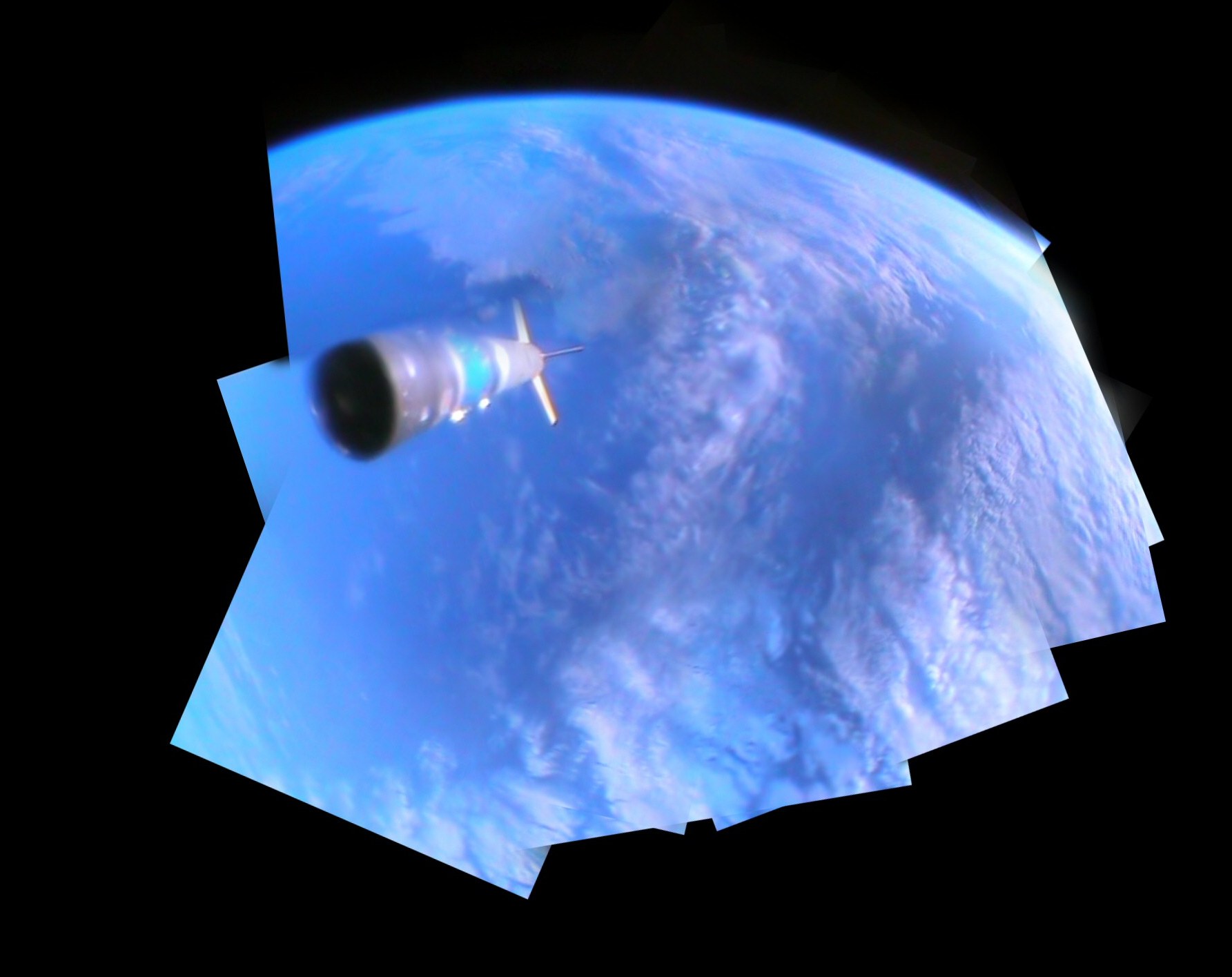MIRIAM was to be separated from the remaining payload shortly after engine shutdown and then reach an apogee of 175 km.
|
Unfortunately on deployment of the balloon one of the interlocks jammed. Thus the clamp ring which hold the balloon inside the probe also got jammed. But because the system had already detected a separation, the inflation sequence for the balloon was executed as planned and the inflation systems deck started to pressurize the still packed balloon. Due to the overpressure the inflation hose was pressed off its clamp mechanism.
Due to the error in the separation mechanism MIRIAM separated too late from the payload module of Rexus 4 with the camera module. Then MIRIAM departed from the payload much slower than planned. Subsequently the payload gained speed due to the separation from the upper stage of Rexus 4 and "chased down MIRIAM". Therefore MIRIAM and the payload module collided. Due to the collission the stuck clamp ring of the balloon was shaken loose and the only partially inflated balloon was set free. But unfortunately due to the early separation of the inflation hose only approximately 10% of the planned gas volume could be brought into the balloon.
|
Unfortunately the balloon module as well as the service module could not be found and therefore not recovered, despite activated radio beacons. The cause was that both modules had been equipped with beacons sending on the same frequency. This is especially bitter because no data were received from the instrument pod of the balloon.
|






